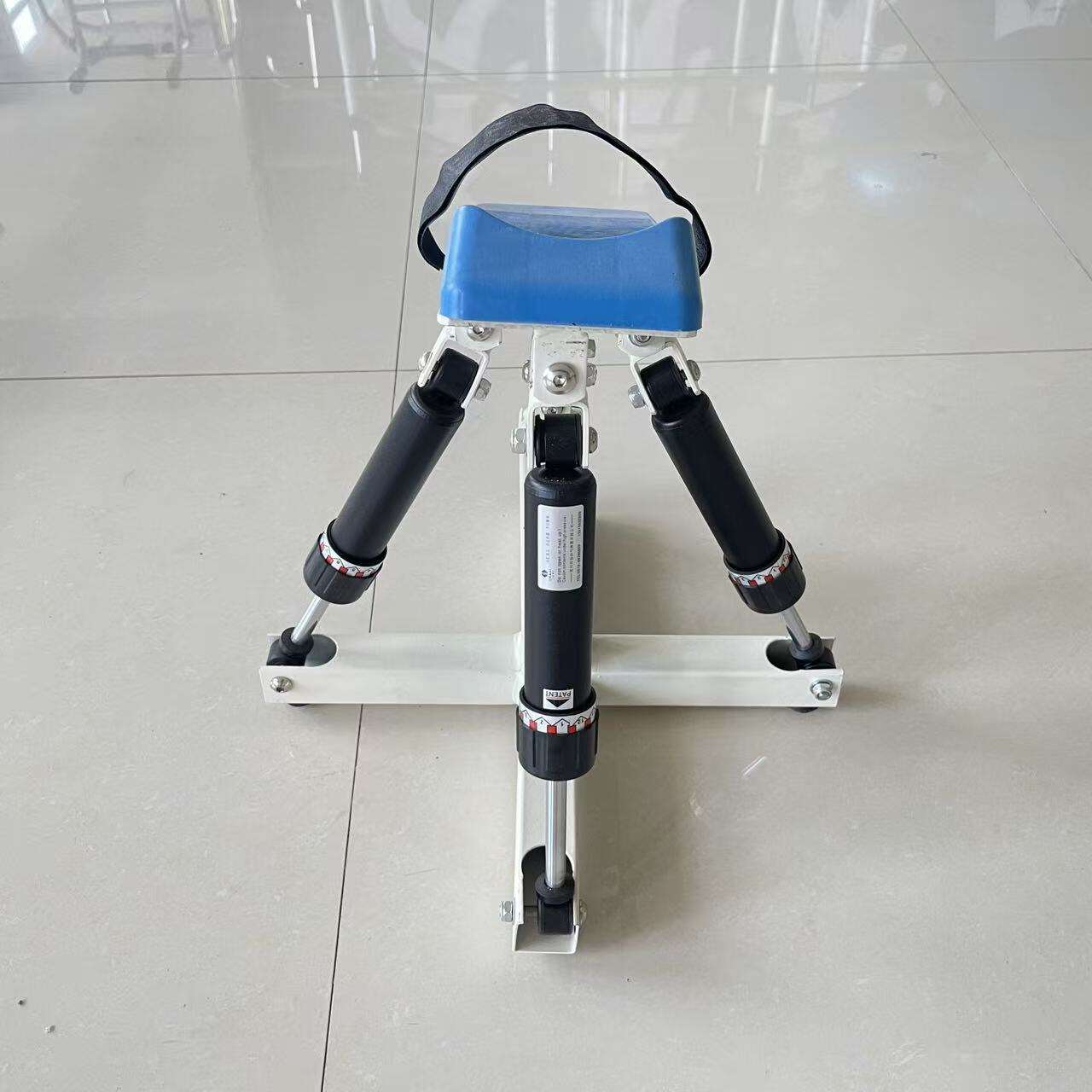Assess Your Specific Rehabilitation Needs
Understanding your specific condition and recovery goals
It's important for individuals to work closely with their healthcare providers to document everything related to diagnosis, track progress over time, and set realistic recovery goals. What matters most during rehabilitation varies quite a bit between different conditions. Someone recovering from a stroke often needs help getting movement back in their arms and hands, whereas people healing from torn ACLs typically concentrate on rebuilding strength around the knee joint. Knowing these specific needs helps professionals choose the right tools for each situation. Research published in the Rehabilitation Outcomes Quarterly last year found that when treatments are customized rather than one-size-fits-all, patients stick with their therapy programs about 34 percent more frequently.
Matching device type to mobility level and injury severity
Braces that immobilize joints work well when dealing with sudden injuries, but people with long term issues such as osteoarthritis generally benefit more from dynamic orthoses that provide ongoing support. When thinking about wheelchairs for home use, doorways matter a lot. Most regular chairs will fit through doors that are 32 inches wide, though larger models meant for heavier individuals need at least 36 inches clearance. Also important is making sure whatever chair gets chosen can actually hold up under the person's weight without any problems. How much weight someone can put on their legs makes all the difference too. Those who cannot bear weight at all usually end up needing forearm crutches equipped with comfortable hand grips so they have better control over where they're going and don't get sore hands after walking around.
Evaluating daily living challenges and functional limitations
Conduct a home assessment using this checklist:
- Number of stairs and presence of handrails
- Bathroom doorway dimensions
- Requirements for transferring in and out of vehicles
According to a 2023 WHO report, 68% of fall-related reinjuries occur due to mismatched or poorly adapted home mobility equipment.
Using patient-reported outcomes to personalize rehabilitation device selection
Tools like the 10-item Rehab Device Usability Scale (RDUS) help measure comfort, stability, and confidence during everyday activities. Patients scoring below 7/10 on the RDUS are 52% more likely to abandon their prescribed devices (Journal of Rehabilitation Medicine, 2024). Integrating these self-reports with clinical evaluations enhances the precision of device matching.
Explore Common Types of Rehabilitation Devices and Their Uses
Rehabilitation devices are essential for restoring independence and accelerating recovery. Selecting the right tool based on individual needs improves outcomes-proper device selection increases therapy adherence by 34% (Journal of Rehabilitation Medicine, 2023). Below is an overview of key categories and their clinical applications.
Mobility Aids: Walkers, Crutches, Canes, and Wheelchairs by Patient Need
Different mobility devices give varying amounts of support based on what patients actually need. Walkers remain the most stable option for folks who struggle with balance problems after falls or surgeries. Forearm crutches work better when someone can put some weight on their legs but still needs extra help staying upright compared to those old fashioned underarm crutches that tend to dig into the armpits. Canes are great for people with minor walking issues, and many newer models come with adjustable heights which makes them easier on the wrists over time studies show around a 22 percent reduction in strain compared to fixed height versions. And let's not forget about wheelchairs for people who can't walk at all these days manufacturers have made big improvements with lighter materials and special cushioning systems designed to reduce pressure sores when sitting for long periods.
Orthoses and Orthopedic Supports for Joint Stabilization and Alignment
Braces that can be adjusted are really helpful for people dealing with unstable joints from things like osteoarthritis or after surgery. The rigid AFO devices keep feet aligned properly which is super important for stroke survivors trying to avoid falls. For those recovering from sports injuries, soft knee supports actually boost awareness of body position while they're healing. Some studies have found that using lower back support belts along with regular physiotherapy sessions leads to better posture fixes around 30% of the time. Of course results vary depending on individual circumstances but these findings suggest there's real value in combining different approaches to rehabilitation.
Prostheses After Amputation: Aligning Device Capability With Residual Function
Modern prosthetics emphasize functional integration over one-size-fits-all designs. Microprocessor-controlled knees adapt to walking speed, cutting energy expenditure by 18% compared to mechanical joints. Upper-limb myoelectric prostheses enable intuitive grip patterns, allowing amputees to perform precise tasks like using utensils or handling small objects.
Exercise and Electrotherapy Devices: Resistance Tools and Neuromuscular Stimulation (TENS, EMS, NMES)
Resistance bands that adjust their tension make it possible to do strength training safely from the comfort of ones own home. When it comes to getting muscles back in action after they've been sitting idle, neuromuscular electrical stimulation or NMES can really help. Some studies have actually found that when folks combine NMES with regular physical therapy, their quad muscles recover about two weeks faster than usual. For those dealing with ongoing pain issues, TENS units continue to be among the best options available. A pretty impressive 64 percent of people who try them find themselves needing less pain meds over time. That's why many healthcare professionals still recommend these devices as part of comprehensive treatment plans.
Work with Healthcare Providers for Accurate Device Prescription
Why Consultation With Healthcare Providers Ensures Effective Rehabilitation Device Use
Collaborating with medical professionals improves rehabilitation outcomes by 58% (Journal of Rehabilitation Medicine, 2023). Clinicians apply evidence-based standards to prescribe devices tailored to biomechanical needs, whether recommending orthoses for joint alignment or walkers for gait support. Clear usage instructions, supported by research on accurate labeling practices, reduce user errors by 34%.
The Role of Physical Therapists in Preventing Complications Through Proper Fitting
Physical therapists use 3D gait analysis and pressure mapping to fine-tune device fit-key steps in preventing complications like pressure ulcers or joint misalignment. Improperly fitted wheelchairs account for 18% of mobility aid-related injuries annually (NIH, 2023), underscoring the importance of professional fitting and follow-up adjustments.
Case Study: Therapist-Guided Cane Fitting Reduces Fall Risk by 40% (CDC, 2022)
A CDC trial found that 30-minute sessions with a therapist reduced fall rates among cane users from 22% to 13% over six months. Therapists taught correct weight distribution techniques and adjusted cane height within 0.5" of the ideal measurement-a level of precision unattainable through self-selection.
Prioritize Comfort, Usability, and Long-Term Value
How Comfort and Adjustability Improve Patient Adherence to Rehabilitation Devices
Padded contact points and customizable settings minimize discomfort and pressure points, encouraging consistent use. Patients using adjustable orthoses report 38% higher adherence than those with rigid models (Journal of Rehabilitation Medicine, 2023).
Ease of Use and Maintenance: Keys to Sustained Compliance
Devices requiring minimal setup or specialized tools are used 2.3 times more frequently. Features like tool-free adjustments and machine-washable components simplify daily routines and promote long-term compliance.
Balancing High-Tech Features with User-Friendly Design in Modern Rehabilitation Devices
While app-connected electrotherapy devices exist, 67% of patients prefer intuitive physical buttons over touchscreens (Clinical Biomechanics, 2022). Preset modes for common conditions strike a balance between advanced functionality and ease of use.
Durability and Material Quality: Investing in Long-Term Performance
Medical-grade aluminum frames last nearly 5 years longer than polymer alternatives, according to a 2023 procurement analysis. Breathable, antimicrobial fabrics retain integrity after repeated cleaning, ensuring both hygiene and longevity.
Cost-Benefit Analysis: Premium vs. Budget Devices and Replacement Frequency
Though premium rehabilitation devices cost 50-70% more initially, their 8-12 year lifespans result in 40% lower lifetime costs compared to budget models that require replacement every one to two years.
FAQ Section
What is the Rehab Device Usability Scale (RDUS)?
The Rehab Device Usability Scale (RDUS) is a tool that measures comfort, stability, and confidence during everyday activities for patients using rehabilitation devices.
How do microprocessor-controlled prosthetics benefit amputees?
Microprocessor-controlled prosthetics adjust to walking speed, reducing energy expenditure compared to mechanical joints, and enable intuitive grip patterns for precise tasks.
Why consult healthcare providers for rehabilitation device use?
Consulting healthcare providers improves rehabilitation outcomes by tailoring device prescriptions to biomechanical needs and ensuring proper fitting.
Table of Contents
- Assess Your Specific Rehabilitation Needs
-
Explore Common Types of Rehabilitation Devices and Their Uses
- Mobility Aids: Walkers, Crutches, Canes, and Wheelchairs by Patient Need
- Orthoses and Orthopedic Supports for Joint Stabilization and Alignment
- Prostheses After Amputation: Aligning Device Capability With Residual Function
- Exercise and Electrotherapy Devices: Resistance Tools and Neuromuscular Stimulation (TENS, EMS, NMES)
- Work with Healthcare Providers for Accurate Device Prescription
-
Prioritize Comfort, Usability, and Long-Term Value
- How Comfort and Adjustability Improve Patient Adherence to Rehabilitation Devices
- Ease of Use and Maintenance: Keys to Sustained Compliance
- Balancing High-Tech Features with User-Friendly Design in Modern Rehabilitation Devices
- Durability and Material Quality: Investing in Long-Term Performance
- Cost-Benefit Analysis: Premium vs. Budget Devices and Replacement Frequency
- FAQ Section

